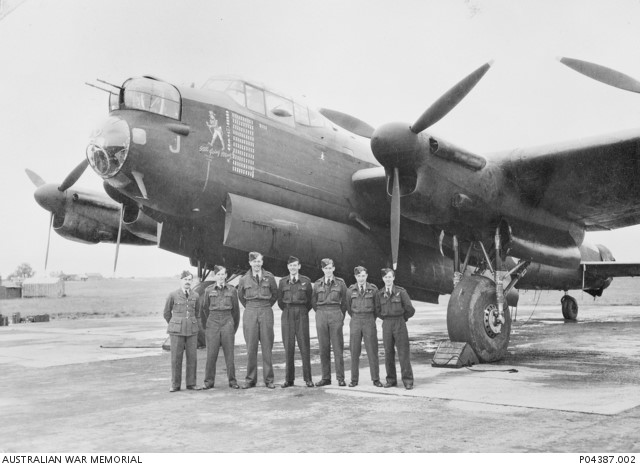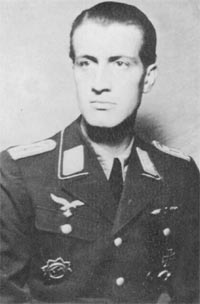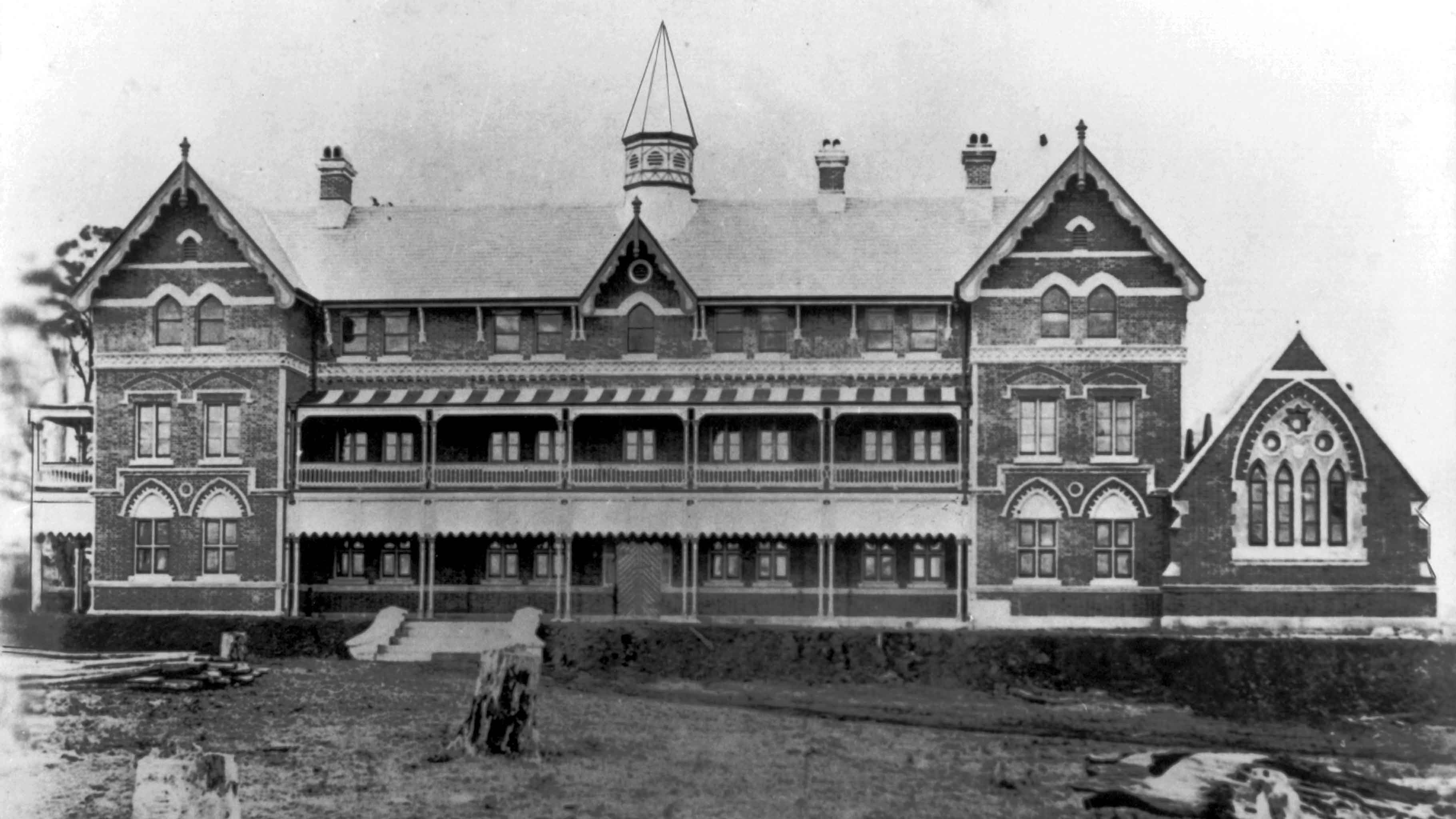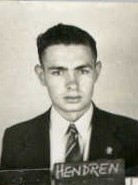Flight Sergeant Keith Robert Hendren, the son of George Robert Hendren and Eunice Augusta Hendren (nee Thurecht), was born at Toowoomba in Queensland on 14th September 1924. He was educated at the Toowong State School during the years 1936 until 1937 and at the Toowoomba Grammar School during the years 1938 to 1941. He completed the Junior Public Examination in 1939 and the Senior Public Examination in 1941. He was a Sergeant in the Toowoomba Grammar School Cadets. After leaving school he was employed as a Bank Clerk with the Commonwealth Bank, Queen Street, Brisbane. He applied for aircrew training in the Royal Australian Air Force on 28th November 1942. At the age of 18 years and 4 months he was enlisted into the Citizen Air Force of the R.A.A.F. at No. 3 Recruiting Centre in Brisbane on 29th January 1943 after giving a commitment that he would serve for the duration of the war and an additional twelve months. He was allotted the service number of 434787. His physical description at the time of his enlistment was that he was 5 feet 6 inches in height and weighed 134 pounds. He had a dark complexion, brown eyes and dark brown hair. He stated that he was of the Church of England religion. He gave his next of kin as his father, residing at 41 Ascot Terrace, Toowong, Brisbane. He also nominated his fiancée, Miss M. Perry, residing at 12 Prospect Road, Tafford, England, as one to be advised in the event of his injury or death.
Flight Sergeant Keith Hendren joined No. 3 Initial Training School at Sandgate in Queensland on 29th January 1943. He joined No. 1 Air Observer School at Cootamundra in New South Wales on 24th June 1943. He joined No. 1 Bombing and Gunnery School at Evans Head in New South Wales on 20th September 1943. He joined No. 1 Air Navigation School at Parkes in New South Wales on 13th November 1943. He qualified for the Navigator Qualification Badge and was promoted to the rank of Temporary Sergeant on 9th December 1943. He joined No. 2 Embarkation Depot at Bradfield Park in Sydney to prepare for service overseas on 10th December 1943 on attachment to the Royal Air Force. He embarked by sea transport from Brisbane in Queensland on 29th December 1943 for service overseas on attachment to the Royal Air Force and after travelling via Canada he disembarked in the United Kingdom on 9th February 1944. He joined No. 1 Personnel Despatch and Reception Centre at Bournemouth on 9th February 1944. He joined No. 8 (Observer) Advanced Flying Unit at Royal Air Force Station on 7th March 1944.
Flight Sergeant Keith Hendren joined No. 30 Operational Training Unit at Royal Air Force Station Hixon on 11th April 1944 where night bomber crews were trained on Vickers Wellington aircraft. He was promoted to the rank of Temporary Flight Sergeant on 9th June 1944. He joined No. 71 Base at Royal Air Force Station Lindholme in Yorkshire on 29th June 1944. He joined No. 101 Squadron at Royal Air Force Station, Ludford Magna in Lincolnshire for operational duties on 8th December 1944. No. 101 Squadron flew top secret radio jamming system codenamed “Airborne Cigar”. The aircraft had to break radio silence to carry out jamming and this made them highly vulnerable to being tracked and attacked. No. 101 Squadron had the highest casualty rate of any Squadron.
Flight Sergeant Keith Hendren was the Navigator and crew member of Lancaster PB.256 of 101 Squadron that went missing during air operations, target Ludwigshaven, Germany on 1st February 1945. The aircraft took off from R.A.F. Station Ludford Magna at 15.50 hours on 1st February 1945 and nothing was heard of this aircraft after it took off. The Commanding Officer of No. 101 Squadron wrote the following letter to his father on 3rd February 1944:
Dear Mr Hendren, No doubt by the time you receive this letter you will have been informed that your son Flight Sergeant K.R. Hendren is missing from air operations, as the aircraft in which he was a member of the crew failed to return from an operational sortie over enemy territory on the night of 1st February 1945, and it is with profound regret that I write you. I am unable to give you any news as no messages were received from the aircraft after take-off and nothing has so far been heard of it or any member of the crew, but immediately any information comes through you will be advised immediately.
Your son has shown himself to be a very capable and keen Navigator who carried out his flying duties with a fine spirit and tenacity. In expressing the sincere sympathy of the entire Squadron at this anxious time, we all join with you in hoping that some good news will eventually come through. Yours sincerely, I.M. Gundry-White, Wing Commander.
Despite enquiries through the International Red Cross Committee in Switzerland, nothing was revealed as to the fate of the aircraft and its crew. His death was presumed to have occurred on 1st February 1945. On 6th January 1947 the R.A.A.F. Headquarters in London advised the Air Board in Melbourne that information extracted from German documents revealed that the aircraft was shot down on the 1st February 1945 at 20.30 hours and crashed about 5 kilometres east of Mundenheim-Gartenstadt in the district of Ludwigshafen/Rhein. Six members of the crew are named as being dead including Flight Sergeant Hendren and in addition, two members were unidentified. Two members were buried at Mundenheim-Gartenstadt and six were buried at Ludwigshafen. The eight bodies were exhumed from the Luwigshafen Cemetery and six of the bodies including Keith Hendren’s could not be positively identified. His body was finally laid to rest in a collective grave at the Bad Toelz (Durnbach) War Cemetery 28 miles south of Munich in Germany. The two identified members of the crew lie in adjoining plots. They served together and now they rest together.
Flight Sergeant Keith Hendren’s name is commemorated on Panel No. 123 at the Australian War Memorial in Canberra.
Flight Sergeant Keith Hendren, at the time of his death was 20 years of age. For his service during World War 2, he had entitlement for the Air Observer Qualification Badge, the 1939/1945 Star, the Aircrew Europe Star, the Defence Medal, the War Medal and the Australian Service Medal 1939/1945. His name is commemorated on Panel No. 123 at the Australian War Memorial in Canberra.

Australian War Memorial photograph P04387.002 The crew of a Lancaster Bomber in front of their aircraft.
Note
Flight Sergeant Keith Hendren’s Lancaster is believed to have been shot down by Major (then Hauptmann) Gerhard Fredrich.

Major Gerhard Fredrich (above) was a transport pilot turned night fighter ace. Lancaster PB.256 was Major Fredrich’s 22nd recorded victory against allied bombers. His was himself killed when his aircraft (JU-88 G-6 W.Nr. 621801) collided with a R.A.F. Lancaster on the 16/02/1945 killing the crews of both planes.
Toowoomba Grammar School archive records show that he was enrolled as a student on 1st January 1938 and that he left the School on 31st December 1941.
External Links
Australian War Memorial Honour Roll



